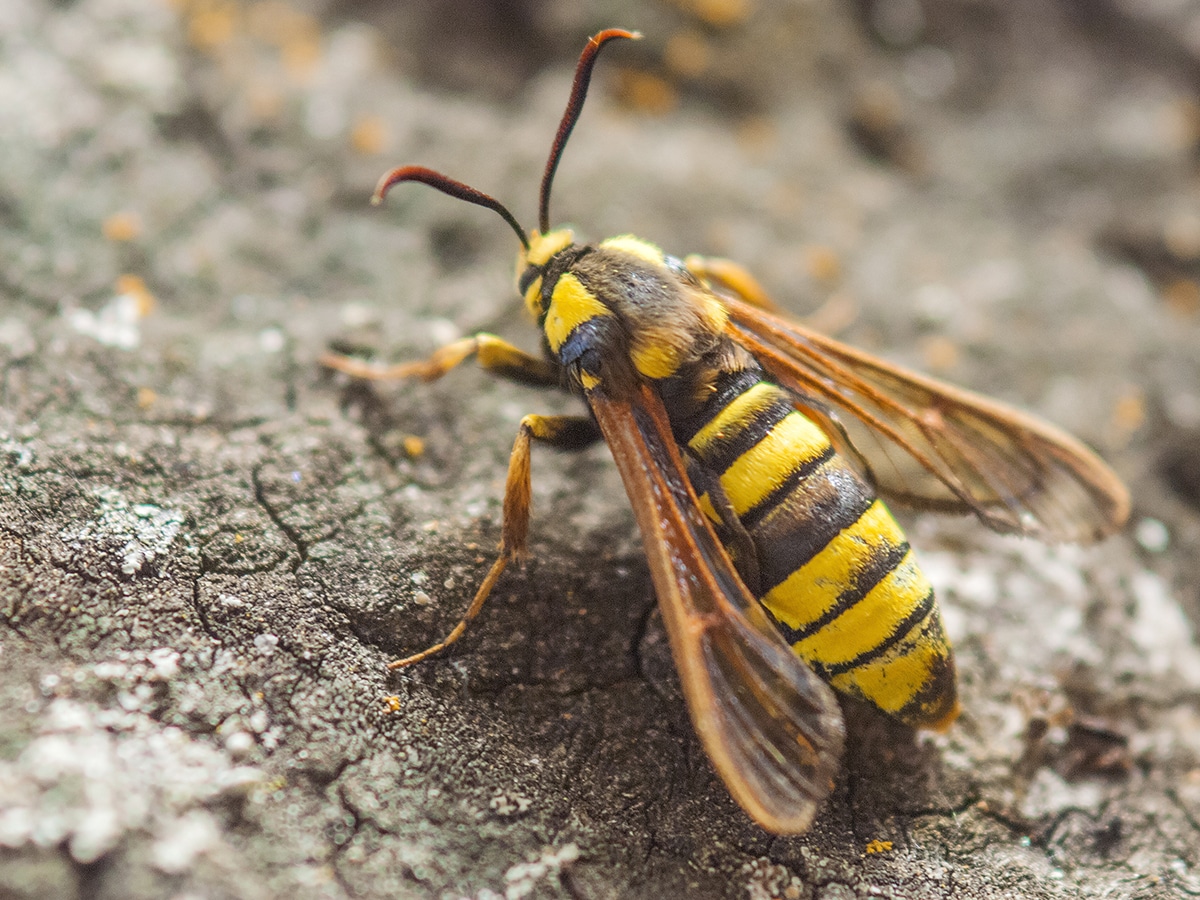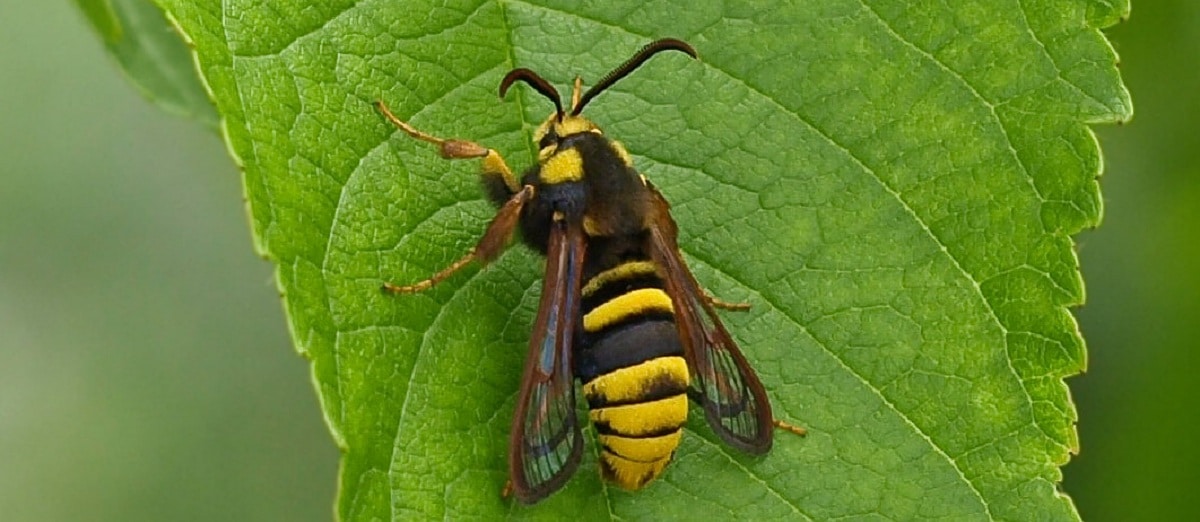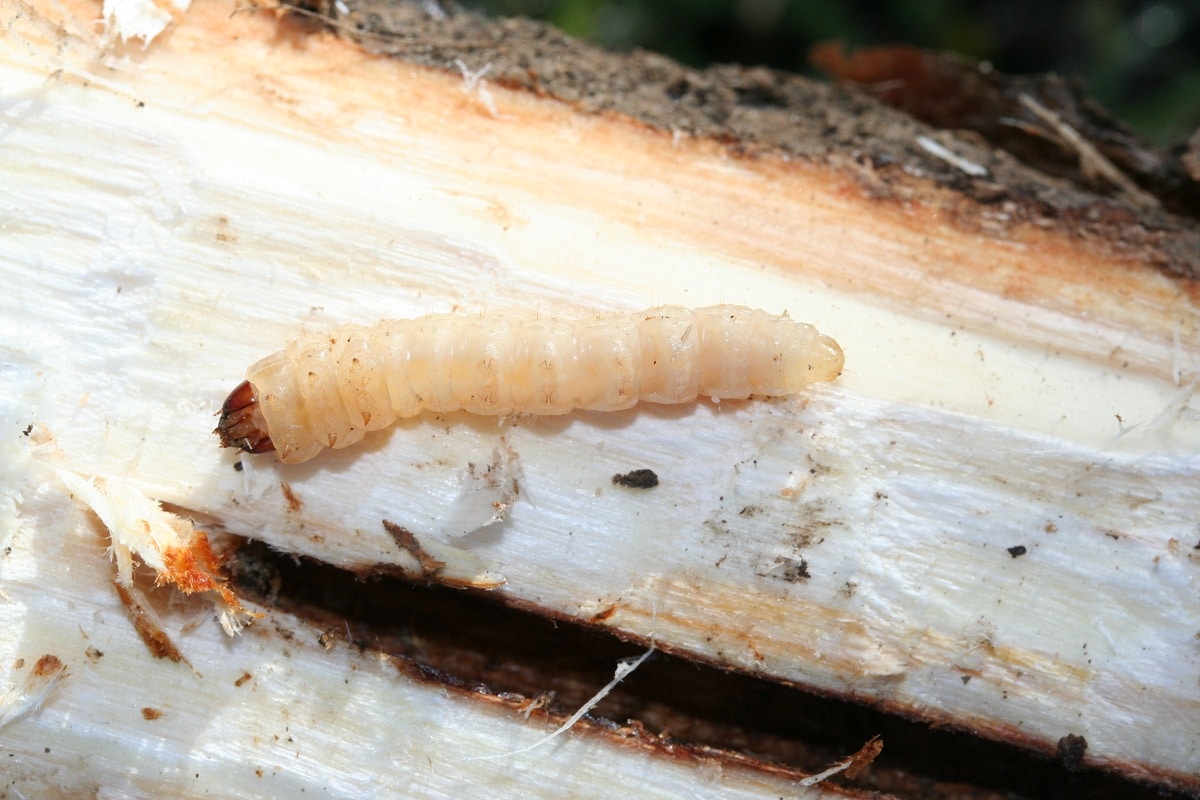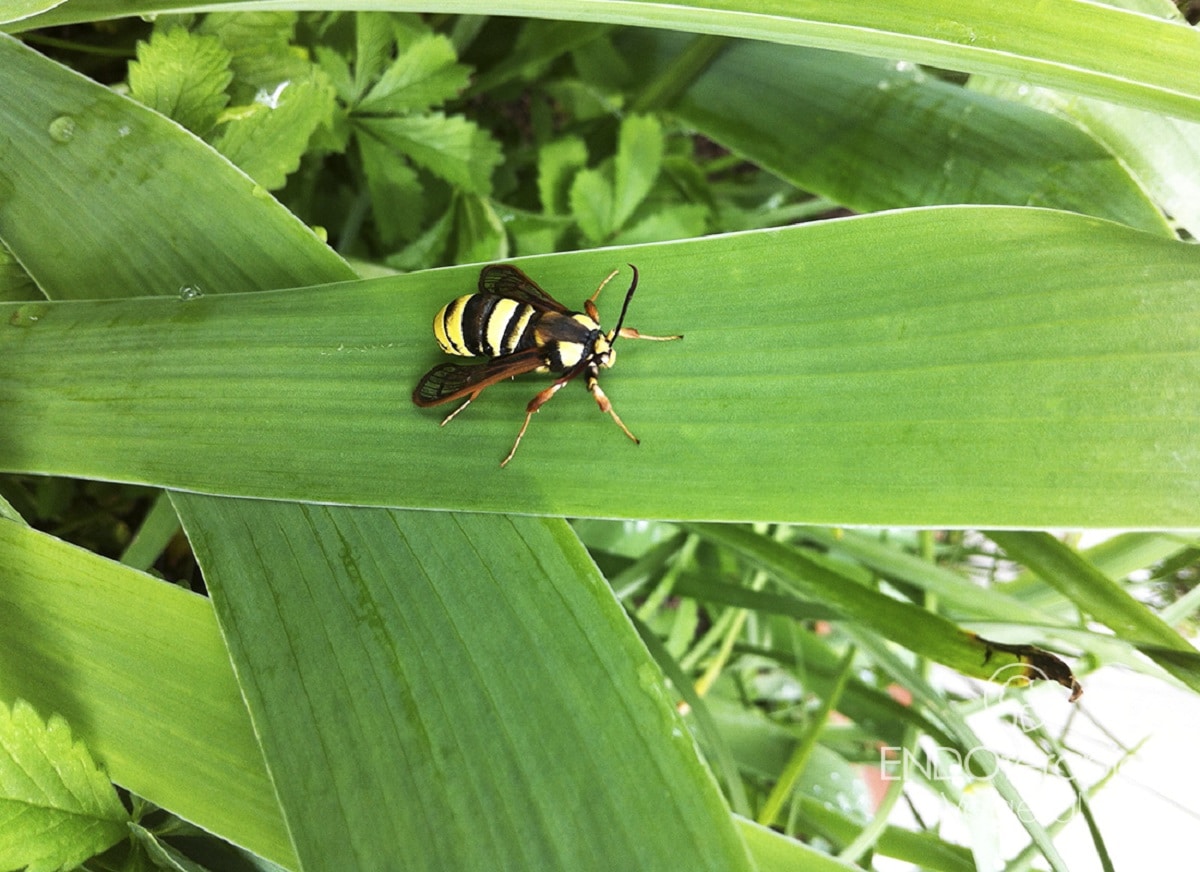
Today we are going to talk about a type of pest that affects crops and ornamental trees. It's about the Sesia apiformis. It is a type of lepidopteran with the characteristics of a borer that belongs to the Sesiidae family. The some occasions are usually found on plants such as Salix and Alnus. The problem with this type of insect is that when it is in a caterpillar state, it mainly feeds on trees of the genus Populus.
In this article we are going to tell you all the characteristics, life cycle and treatment of the Sesia apiformis.
Key features

When we see an adult specimen Sesia apiformis we see that it has an appearance similar to that of a wasp. It can be easily distinguished since it has the abdomen in prolongation of the thorax. It is also easily recognized because the antennas are bipectinate and black in color. They have a yellow lock at the base. There are some differences between male and female specimens. The females are normally more robust and with a larger wingspan than the male. Some females can measure up to 45mm in length.
When they are larvae, they usually measure up to 55 mm in length in their last stage. They are easily recognized by the naked eye since they are larvae with an ivory white color and a light brown head with a heart-shaped forehead. These types of differences are what distinguish it from other piercers with similar characteristics.
One of the parts of the life cycle of this insect is chrysalisation. They do it in the lower part of the poplars, in the shallowest roots. During this stage, they form very characteristic cocoons that are protected by wood chips. This protection gives them a hardness strong enough to be able to stay next to the exit hole. The female makes the laying at the base of the trees or on the roots that are closest to its base. It is responsible for looking for small cracks to be able to deposit the eggs and ensure that they are protected. It is common to see large numbers of eggs that have been shed from the ground. However, this is not a problem since the female is capable of depositing between 1.500-2.000 in several days.
Biological cycle of the Sesia apiformis

We are going to see what are the different stages that this insect goes through and which is the one that can most damage crops and trees. Before chrysalising, the caterpillars make a hole to circulate in the base of the trunk. The cocoons formed by the sawdust of the wood is eaten by the butterflies to be able to go outside. This occurs around the end of spring from mid-May and can last until the first half of July.
Both males and females, once they go outside, to stretch their wings and stand in the sun on the trunks of other trees. Females are responsible for emitting their pheromones to attract males. Pheromones are emitted from the antennae and are used to produce copulation. Once the female is seconded, it moves towards the root neck, the good beginning of the trunk and is where the eggs are laid.
The first caterpillars that are born do so in the middle of June, when temperatures begin to rise and the climate is much more pleasant for their growth and development. They enter the cracks in the bark of the trees and this is where it is said to feed on the cambium. To do this, they always make galleries in a downward direction that increase in diameter as the size of the larvae increases. This is how they spend the whole summer and in the middle of October and at the beginning of November to make a cocoon inside the trunk.
Later, chrysalisation occurs between the months of March to June and is at starting in May when we see adults complete the biological cycle again.
Damage to the Sesia apiformis

We have commented that the Sesia apiformis it is an insect that has become a pest and damages crops. And it is that this insect fundamentally affects the formation of trees. Most of the damage they cause is done when they are larvae. The galleries that make caterpillars are the ones that cause the sap ducts to break. For this reason, the affected part of the trees begins to weaken, leading on numerous occasions to a breakdown of their mechanics due to the action of the wind.
Another of the fundamental damages of the Sesia apiformis is to damage the wood of higher value for production in the timber industry. And it is that the poplar has one of the best woods in terms of quality and this insect damages it. The maximum vigilance must be taken into account in the first third of the tree, which is where the caterpillars are most active. Poplar plantations must be monitored so that they are not affected by these insects.
Control methods
We are going to analyze what are the different control methods that exist in order to reduce the populations of Sesia apiformis and not harm the poplars. Because caterpillars spend most of their life cycle inside galleries it can only be treated with chemicals. These chemicals must be applied in a short period of time, which is the time between the hatching of the egg and the penetration of the caterpillars into the tree.
It is only at this point in the life cycle where larvae are vulnerable to chemical agents and populations can be well controlled. These treatments are mainly aimed at caterpillars in their early stages before they can be introduced into trees.
I hope that with this information you can learn more about the Sesia apiformis and their characteristics.